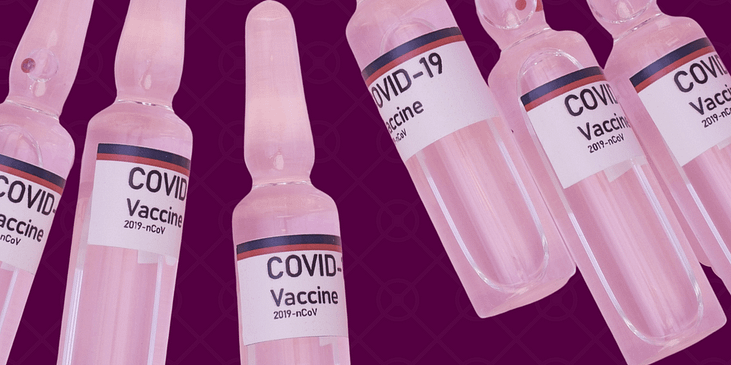By Mahevash Shaikh
When COVID-19 vaccines were rolled out, many people across the globe breathed a huge sigh of relief.
But it quickly became evident that not every country had equal access to vaccines. In particular, people with disabilities, in some countries, have been largely excluded in this regard.
Let’s take a look at the cause and impact of COVID-19 vaccine inequity for the disabled community.
Why are people with disabilities not getting adequate access to COVID-19 vaccines?
1.3 billion people across the globe have some sort of disability and people with disabilities are more likely to be significantly impacted by COVID-19. This isn’t only because they have underlying health conditions, it’s because adequate measures have not always been provided to help them protect themselves.
Wealth disparities between high-income and low-income countries have also exacerbated the problem.
World Health Organization Director-General Dr. Tedros Adhanom Ghebreyesus said that 87 percent of vaccines have gone to the world’s wealthiest countries, while low-income countries only received 0.2 percent of vaccines.
“Most countries do not have anywhere near enough vaccines to cover all health workers or all at-risk groups, never mind the rest of their populations,” Adhanom Ghebreyesus said at a media briefing. “Inequitable vaccination is a threat to all nations, not just those with the fewest vaccines. The biggest barrier to ending the pandemic remains sharing of doses, of resources, of technology.”
A lack of accessibility
In many countries, the first step to vaccination is to get yourself registered online. But the registration process is not accessible for many people with disabilities. Vaccination websites are not easy to access for people with visual, hearing and intellectual disabilities. Even though the World Health Organization has released guidelines like “provide information about the vaccine, as well as vaccination prioritization, registration and other processes, in a range of accessible formats and languages,” many websites are not following them.
An example of a vaccine website that is not accessible is India’s COVID Vaccine Intelligent Network (CoWIN) web portal. There is no audio text for Captcha, making the website unusable for people with visual disabilities and low literacy.
Even public health information campaigns are not disability-inclusive, which can result in incidents like the Deaf-Blind Ugandan man, Willy Oloya, who was shot in the leg for not abiding by a COVID-19 curfew – a curfew he knew nothing about because official information about COVID-19 was not accessible to him, The Daily Monitor reported.
Inaccessibility is common on many U.S. vaccination websites as well.
Kaiser Health News (KHN) reported that “across the country, people who use special software to make the web accessible have been unable to sign up for the vaccines or obtain vital information about COVID-19 because many government websites lack required accessibility features.”
WebAIM studied COVID-19 vaccine websites gathered by KHN from all 50 states and found accessibility issues on almost all of 94 web pages, which included general vaccine information, lists of vaccine providers and registration forms.
In at least seven states, blind residents said they were unable to register for the vaccine through their state or local governments without help.
Australia doesn’t fare well in this regard either.
A significant number of sections on Australia’s Department of Health website were found to be incompatible with accessibility software like screen readers, according to Vision Australia. The site also uses poor color contrast and excessive alt text. Vision Australia’s manager of government relations and advocacy, Chris Edwards, said blind and low-vision Australians were “left unable to determine where and when to get their vaccination, unless they had others to support them.”
Showing up at vaccination sites is also a problem in itself because many vaccination locations are not disability-accessible.
The Centers for Disease Control website lists guidelines like: “Ensure vaccination locations are accessible to people with disabilities consistent with disability rights statutes such as the Americans with Disabilities Act and Section 504 of the Rehabilitation Act of 1973.”
But like people with disabilities have reported in the past, these protections are retroactive, meaning that if you face access barriers, you must legally pursue it in order to get accessibility implemented, which is prohibitively expensive in both money and time for people with disabilities.
By and large, the needs of people with disabilities have been ignored so far.
In British Columbia, it took a week of protests and a human rights complaint to include most kinds of disabilities on the vaccine priority list.
The misinformation problem
A lot of misinformation exists about COVID-19 vaccination, thanks to rumors and conspiracy theories which have sowed seeds of distrust of healthcare providers.
Even with health care professionals debunking these conspiracy theories, many people are afraid to take the vaccine due to fear of side effects.
Limited research on the effectiveness of the vaccine on people with disabilities, especially people with compromised immune systems, means that even those who are vaccinated don’t know how they will be impacted if they contract COVID-19.
The road ahead is long and difficult
There are a wide range of disabilities and no two people are the same. This is why people with disabilities, allies and activists all need to come together and advocate for disability rights, including in public health emergencies and disasters and vaccine accessibility needs to be prioritized on a global scale.
People with disabilities have been neglected and pushed to the back of the line for generations. From the lens of human rights and disability justice, there is no justification to exclude or delay proper access from receiving COVID-19 vaccinations. Disability will always be a human rights issue. As we continue to grapple with COVID-19 and future pandemics, people with disabilities must no longer be ignored, marginalized or treated as an afterthought because in doing so, decision-makers are costing lives.
Catch up on our latest blog posts here!
Related Links:
Learn about WID’s Emergencies, Disasters, and Climate Resilience Department
Learn about WID’s COVID-19 Response Work


0 comments on “Why Global Vaccine Inequities Are Harming People with Disabilities”